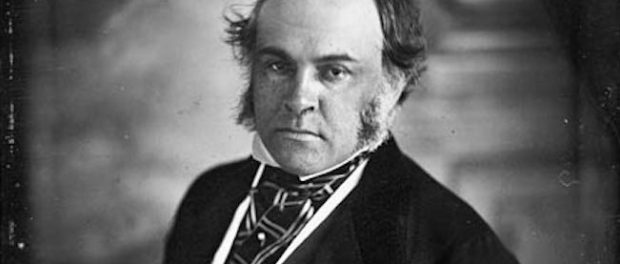1848: Responsible Government & Other Quebec Curios
Part of “Division and Resistance”, 1827-1863
 Detail of a portrait of James Bruce, the Earl of Elgin, c. 1848. Source: Library and Archives Canada/C-000291
Detail of a portrait of James Bruce, the Earl of Elgin, c. 1848. Source: Library and Archives Canada/C-000291
Part of the reason why La Fontaine and his team were successful in obtaining responsible government in 1848 was due to the arrival of Lord Elgin the previous year. La Fontaine had resigned a few years earlier after one attempt at responsible government had ended in failure. With Lord Elgin, however, La Fontaine and his political partner, Robert Baldwin, had found an ally. Previously serving as Governor of Jamaica, James Bruce, styled as Lord Elgin (the same Elgin after whom the Elgin Marbles are named), was appointed Governor General of Canada. A relative of Lord Durham through marriage, Elgin supported the recommendation for responsible government, unlike previous Governor Generals, and called upon Louis-Hippolyte La Fontaine, who earned his majority in the assembly, to form the first government that truly had the support of its people.
Responsible government meant that the Governor did not have as many powers as he used to. Instead of electing his friends and political associates to form a “government” that did not necessarily have the support of either the legislative assembly or the people, with the advent of responsible government, the governor had to accept that it would be the people who elected parliamentarians and that the parliamentarians that had a majority in the legislative assembly would form the government. The top-down structure of government was flipped on its head. No longer would the governor, in his role as representative of the Crown, be responsible for appointing a government: it would now be eligible voters appointing representatives who would form the government. The Governor would be obliged to follow what the government said, even though he might not be in agreement with it. Why would Lord Elgin be in favour of something that would greatly diminish his powers? Coupled with the wish that he did not want to choose sides, as the Governor Generals before him often did, he wanted the British colonies to assume the same government system as his mother country.
The new government system had its ups and downs in the first few years of its establishment. A recurring problem with this system would be that the executive branch of the government, formed by the majority in the legislative assembly, would often be unstable and would continuously change as the assembly’s confidence in the executive council would come and go. This instability would be one of the factors leading up to Confederation. However, even before this instability revealed itself, responsible government would prove almost disastrous for Lord Elgin not even one year into the new government regime, creating a large problem that could have almost ended the new system before it even began to take hold.





